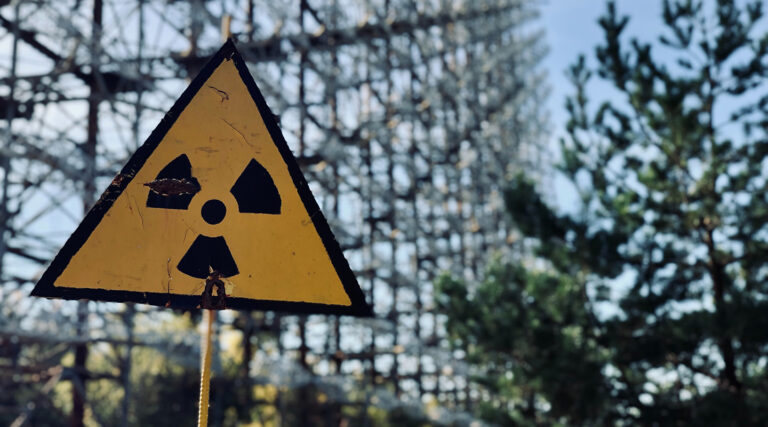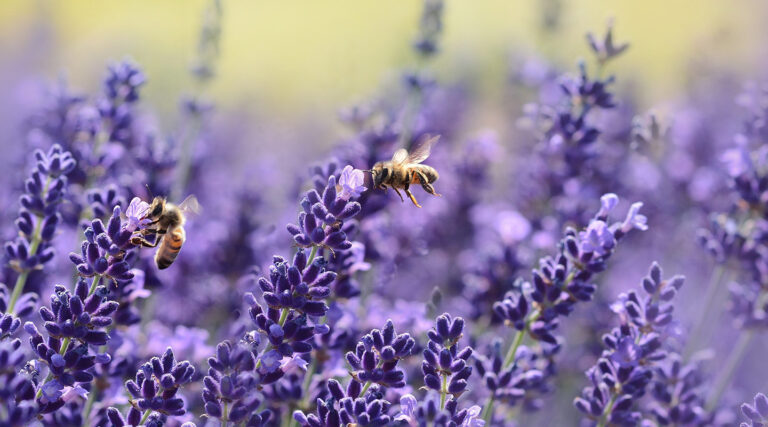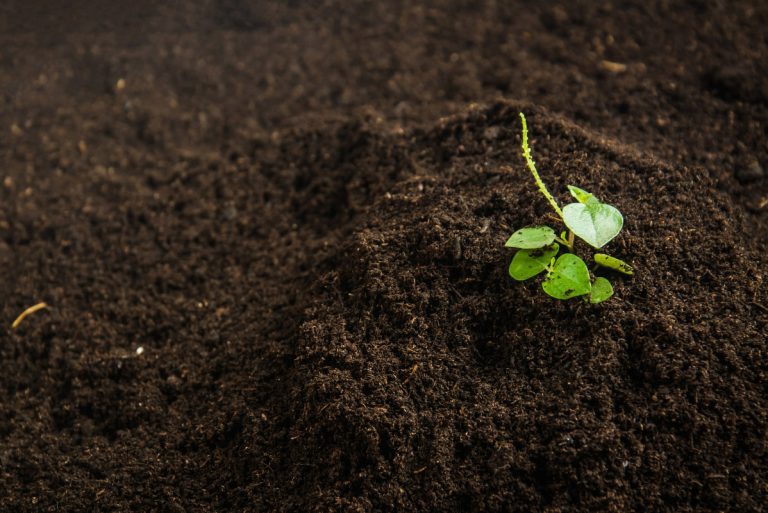A mere 10,000 years ago, 10.6 billion hectares – 71% of the world’s land surface – was covered by forests, shrubs, and wild grasslands. Today, this area has shrunk to just 4.1 billion hectares, and we continue to lose a shocking 10 million hectares of forests per year, the equivalent of 27 soccer fields per minute.
Thankfully, there are many simple changes we can make in our lives to help reverse this trend and protect one of the earth’s most precious resources.
25+ simple ways to protect forests
There are many reasons for deforestation. Old-growth forests are cut down to use their wood or other materials and removed to create room to plant crops or monocultures like pine or palm oil trees. Alternatively, they are cleared for other human-related activities like mining and urban sprawl. Either way, the end result is the same.
It’s vital that we protect the earth’s forests. Our old-growth forests play a vital role in water regulation and preventing drought, and are home to an incredible number of plant and animal species: 70% of the earth’s land animals and plants live in rainforests alone.
Forests also play a vital role in climate change: currently, around one quarter of the world’s carbon emissions are sequestered in forests, rangeland, and grasslands. However, the more forests are destroyed, the less CO2 they’ll be able to absorb, further accelerating global warming.
As a consumer, the choices you make can help to provide ways to protect forests, and you can also do this through education and advocacy. Here are some simple, actionable steps you can take to protect trees at a local and global level.
1. Look for certified wood products
When buying anything made from wood or wood products, look for a recognized, independent certification like the Forest Stewardship Council (FSC), Rainforest Alliance, and the Roundtable of Sustainable Palm Oil. This indicates that the materials are sourced responsibly from sustainably-managed forests.
A Rainforest Alliance Certification also guarantees that the product was produced ethically, and the people involved in all stages of production were treated fairly and paid a decent wage.
2. Avoid tree-sourced items
Better still, another of the useful ways to protect forests is to look for tree-free products that are made from alternatives to wood or paper. One of the most popular alternatives is bamboo, an eco-friendly crop that is quick to regenerate without needing reseeding or fertilizer.

Hemp can be another excellent replacement for wooden and paper products. This material is highly sustainable because hemp plants are hardy, quick-growing, and require little water, pesticides or fertilizers.
Both hemp and bamboo are strong, durable and soft, and versatile: you’ll find a wide range of hemp and bamboo products, from toothbrushes to paper towels and toilet paper.
3. Choose reusable containers
Another great way to protect forests is to use reusable containers, and so helping to reduce the demand for disposable paper containers, which are made from forest products. Invest in a set of good-quality reusable containers, preferably plastic-free ones.
Not only can you use them to safely and conveniently store your leftovers, but you can even take them with you to your local restaurant next time you get a takeaway, and ask them to use these rather than to-go containers.
4. Stay away from disposable plates
One of the simplest ways to protect forests is to opt for smarter choices when it comes to cutlery. Next time you have a party or go for a picnic, use reusable plates and cutlery instead of the disposable variety. It may be a little less convenient, but a bit of extra washing up will go a long way to reduce your waste and help to protect forests.

5. Print on both sides
The paper industry is one of the biggest global contributors to deforestation: 33-40% of the industrial wood traded globally is for the pulp and paper industry, according to the World Wildlife Fund.
You can literally half the amount of paper you use by printing on both sides of the paper, rather than printing everything single-sided. This simple act will greatly reduce the impact on forests.
6. Switch to bamboo paper
Cutting down your paper usage will go a long ways to protect forests, but switching to bamboo paper is an even better solution. Bamboo is much more sustainable than the wood chipping industry, and paper made from this crop is just as strong and practical as regular paper.
You can buy bamboo paper for printing, as well as bamboo toilet paper and paper towels.
7. Go paperless
Better still, you can eliminate paper from your life altogether! Luckily, we’re now living in the digital age, and it’s possible to avoid paper almost entirely with little effort.
Here are a few ways you can go paperless at work or home:
- Rather than printing documents and filing them physically, save everything in the cloud
- Turn down business cards and save your contacts online
- Switch your paper diary for a digital calendar
- Use a do list app like todoist
8. Ditch paper towels, napkins, and toilet paper
Just like paper, paper towels are made from trees and directly contribute to deforestation. A much more sustainable alternative is to use washable cloths or bamboo paper towels,
Similarly, invest in a set of cloth napkins that you can wash and reuse. You’ll never need to buy paper napkins again, and save a bunch of trees in the process!
You can even replace toilet paper with a zero-waste alternative, such as bamboo toilet paper …
Check out our favorite zero-waste toilet paper products here.
10. Seek out zero-waste diapers
Opting for reusable diapers is one of the more impactful ways to protect forests, and can actually save you money too. Disposable diapers not only contribute to deforestation, but they also generate huge amounts of waste which takes decades to break down, as they’re typically made from a combination of wood pulp and plastics.
Going old-school and using cloth diapers is much more eco-friendly. As a busy parent, washing dozens of diapers might sound like a nightmare, but many areas offer diaper services that will switch out your diapers for clean ones.

Alternatively, you could use diapers made from bio and plant-based materials, such as bamboo. Take a look at our top picks for eco-friendly diapers here.
11. Request digital bills instead of paper
One of the simplest ways to protect forests and reduce paper consumption is by opting for digital documents whenever you can. In the digital age, paper bills are an unnecessary use of trees. Contact your suppliers and service providers and request that they send your bills via email rather than in the post.
Even if it’s just a few bills a month, this can make a big difference over the long term! As well as saving trees, receiving your bills digitally means you’ll get them sooner, and it makes it easier to save and manage your finances, as everything is automatically saved in your email.
12. Get your news and magazines online
Another way to avoid using paper and protect forests is to avoid buying physical newspapers and magazines. Almost all publications are now available digitally, so you can subscribe to your favorite source of news or magazine and read it on your phone, tablet, or computer.
Another benefit of this approach is that you can access the content as soon as it’s published rather than waiting for it to be delivered.
13. Get an ereader
Like magazines and newspapers, you can go digital with the books you read by investing in an ereader like a Kindle, Kobo, or Onyx Boox.

Modern ereaders are designed to let you read for hours without your eyes getting tired, and you can load thousands of books into one portable device. You can take an ereader with you wherever you go, and read them in the dark, so not only are they eco-friendly, but they’re also arguably more convenient than paper books.
14. Rediscover the library
If you’re not a fan of e-books, you can still sustainably enjoy paper books through your local library. Libraries are the perfect example of the circular economy: the organization buys a few books that are used and enjoyed by many.
By using the library, you’ll also be supporting a vital local service and ensure that it continues to be available for future generations.
15. Start sending e-cards
Sending a host of birthday and holiday cards every year also uses a large amount of paper, which in turn contributes to deforestation. Instead, send your best wishes digitally, with an ecard; it’s one of the more creative ways to protect forests – and the recipient should appreciate it too.
There are now a range of ecard services available, from ready-made cards to custom cards that you can create yourself and even add your own photos for a truly personal touch!
16. Reuse gift wrap paper and gift bags
We all get a bunch of gift wrap and gift bags every year. Rather than throwing it in the trash, put it aside and save it for when you next give a present to someone.

Not only will this help you reduce the amount of waste you produce, but it also means you won’t contribute to deforestation by buying new paper-based products. Along with using old gift wrap, you can also use eco-friendly alternatives such as recycled and recyclable paper, or scraps of fabric.
17. Avoid buying new wooden furniture
Wooden furniture is often manufactured from pine or other quick-growing wood that is grown by clearing old-growth forests in order to plant monoculture plantations. This is bad news for the environment, as it destroys natural habitats, puts species at risk of extinction, and these plantations are much less effective at absorbing carbon than established, native woodland.
Look for furniture made from sustainably-sourced wood, or buy used wooden furniture instead.
18. Buy forest-friendly (or certified) products
There are many products that can contribute to deforestation, even those that don’t appear to have any relation to trees, wood, or paper. Around the world, native forests are cleared to make way for agriculture, whether it’s crops like coffee and soy, or animal stock such as cattle for beef production.
Avoiding products like beef, soy, and uncertified palm oil is the safest way to ensure that your consumer dollar isn’t leading to deforestation. However, you don’t always have to avoid certain types of products, as long as you shop responsibly.
For example, you can buy shade-grown coffee that is grown under the forest canopy, meaning that trees aren’t cleared for its production. Again, you can also look for certifications like FSC and the Rainforest Alliance to ensure that the products you buy don’t come at the expense of old-growth forests.
Farmers’ markets, co-ops, and zero-waste stores are usually a great place to find these types of products. The TREE Foundation’s Rainforest-Friendly Purchasing Guide is an excellent resource that equips you to shop more sustainably.
19. Plant more trees
One of the simplest and most effective ways to boost the number of trees in the world is to one yourself. It may surprise you how much impact even a single tree can have: one tree will absorb more than a ton of carbon dioxide in its lifetime, the equivalent of driving your car more than 2,000 miles.

If you have space in your backyard, plant a tree – or even a few – preferably native species that are local to your area. You could also join local groups or organizations and help them with their tree planting or reforestation projects.
20. Support sustainable forestry policies
You can also protect forests by supporting sustainable policies on a local, state, and federal level.
Governments at all levels implement a range of policies that can have positive or negative impacts on forests, from the developments they approve to controls on agriculture, planned and regulated tree-cutting and supporting ‘sustained yield’ approaches.
You can use your voice as a citizen by voting for candidates who support forest-friendly policies. You can also write to our call your local representatives and encourage them to take action in this area, as well as on other issues you care about.
21. Slash your waste
We all know that the world is facing a massive waste problem. A combination of a booming global population and increasing reliance on plastic and other non-biodegradable materials has pushed the amount of waste we produce far beyond sustainable levels, causing devastating water and land pollution, and threatening our marine environments.
However, you may not be aware of the direct relationship between waste and deforestation. As we send increasingly more waste to landfill, landfills need to grow to accommodate this demand, destroying natural environments including forests.
You can reduce the amount of trash your household produces by switching to zero-waste items such as, deodorant, toothpaste, and shampoo. When it comes to household waste you can’t avoid, it’s vital to dispose of it responsibly: recycle things like cookware, corks, and razor blades, to avoid them ending up in landfill.
Finally, aiming to live a more minimalist lifestyle can also go a long way: try not to buy things you don’t need, and repair items whenever possible rather than replacing them.
22. Cut down on food waste too
Another of the simple yet effective ways to protect forests is to make a concerted effort to cut down on food waste. Waste doesn’t only cause deforestation through clearing forests for landfill: the other side of this coin is food waste. In the US, we throw away around 161 billion pounds, or between 30 and 40% of the food supply, every year.

Because agriculture is one of the main contributors to deforestation, the more food we grow, the more forests are threatened. This means that food wasted represents forests that have been unnecessarily cut down to grow food that was just thrown in the trash.
Make sure you only buy enough food to meet your needs, and regularly check the best buy dates in your fridge and pantry to ensure you use everything before it expires.
23. Help prevent forest fires
The leading causes of deforestation are agriculture, the woodchipping industry, unsustainable logging, and mining. However, fires also destroy a large amount of forests every year: fires destroyed 23 million acres of land in 2021 alone.
You can help to prevent forest fires by checking the weather conditions and avoiding any activities involving fire or sparks in the case of hot, dry, and windy weather.
When camping, always build your campfire in an open location away from flammable materials, and always douse your campfire until it’s cold to touch. Or, if you can do without a campfire all together, then this is a great option too.
When off-roading, never drive or park on dry grass, carry safety equipment like a shovel, bucket, and fire extinguisher, and keep your vehicle well-maintained to avoid sparks from your exhaust. Finally, take care when operating equipment that may spark, such as chainsaws, and clear the area around where you’re working, especially if it’s dry and windy, and be extremely careful when burning debris.
Refer to this guide from the US Department of the Interior for more info.
24. Visit forests frequently but responsibly
Getting out there and actually visiting forests will also help you to protect them: not only is being in nature great for your physical and mental health, but this will also make you even more motivated to protect these incredible places.
When you visit forests, whether locally or far from home, be sure you do so responsibly. Always follow the seven Leave no Trace principles when in nature:
- Plan ahead and prepare
- Travel and camp on durable surfaces
- Dispose of your waste properly
- Leave what you find
- Minimize campfire impacts
- Respect wildlife
- Be considerate of other people
25. Educate yourself
If you really want to learn actionable ways to protect forests, it’s important to educate yourself. An important part of being a responsible global citizen is making the effort to learn about issues affecting the environment, including deforestation. Learn about forests, why they’re important, and the threats they’re facing on the local and global levels.
Here are some ways you can learn about forests:
- Read books such as “American Canopy: Trees, Forests, and the Making of a Nation,” by Eric Rutko, “The World Without Us,” by Alan Weisma, and “White Waters and Black,” by Gordon MacCreag.
- Check out websites like UNESCO and the WWF.
- Watch documentaries including Bones of the Forest, The Burning Season, and If a Tree Falls.
By educating yourself, you’ll have a better level of awareness of threats facing forests and how you can best take action. You’ll also be inspired to take action and to encourage others to do the same.
26. Educate others
Once you’re armed with vital knowledge about forests and their situation in the modern world, you’ll be able to share this with others, teach them ways to protect forests, and encourage them to take action too. Encourage them to get out into nature, and learn to love trees, woodlands, and nature in general as much as you do!
Teach kids about forests through books and outdoor exploration, whether the kids in your life, as a school teacher, or volunteering to educate children through your local school or community program.
More generally, share your love of forests with your friends, family, and colleagues, by taking them on a hike or inviting them to participate in a tree-planting project. You could also raise awareness through tourism by promoting your local forest areas as a tourism destination.
27. Support organizations working for forest conservation
There are a huge number of organizations, non-profits, and projects working to protect forests, through conservation, advocacy to protect existing forests, and reforestation. You can support these groups in a range of ways: depending on your capacity, you could give a donation, volunteer, or spread the word across your network.
Here are just a few examples of excellent organizations working in this space:
- World Wide Fund for Nature
- The Nature Conservancy
- Rainforest Action Network
- The TREE Foundation
- One Tree Planted
- Plant a Tree Today
- The Sierra Club
You can also support the cause in other unique ways, such as switching to Ecosia, a sustainable search engine that uses its profits to plant trees.
28. Join campaigns to protect forests
If you really want to have an impact and protect forests on a local and/or global level, you can get involved in campaigns that advocate for laws to prevent deforestation, promote reforestation, and better manage our forests, as well as advocating for climate change solutions.

Learning about climate change and advocating for solutions, including but not limited to protecting forests, is vital. You can get involved in campaigns, whether signing a petition, contacting your local representative, or participating in protests run by organizations like Extinction Rebellion.
You can also demand that companies label their products so we know if they are certified and sustainable. Lobby your local representative to introduce better labeling laws, and get in touch with companies to let them know that you’d be more likely to buy their products if they were certified as forest-friendly.
Simply buying certified products can send a message to all manufacturers that consumers are looking for items that don’t damage the environment in general, and forests in particular. How you use your consumer dollar can be very powerful, so encourage others to do the same!
Final thoughts
Protecting our forests, whether a local forest in your area, or a rainforest on the other side of the world, is one of the most important things we can do to mitigate the effects of climate change and look after the planet in general.
There are many ways to protect forests, and things that we can do as individuals to prevent deforestation and promote positive policies such as reforestation. These range from the type of products we buy and the amount of waste we produce to supporting campaigns and advocating for change.
Learning about forests, spending time in them, and sharing your love for forests with others are some of the best ways you can help to protect these precious natural environments for future generations.
If you think others in your network could benefit from knowing how to protect forests, go ahead and share this post!















